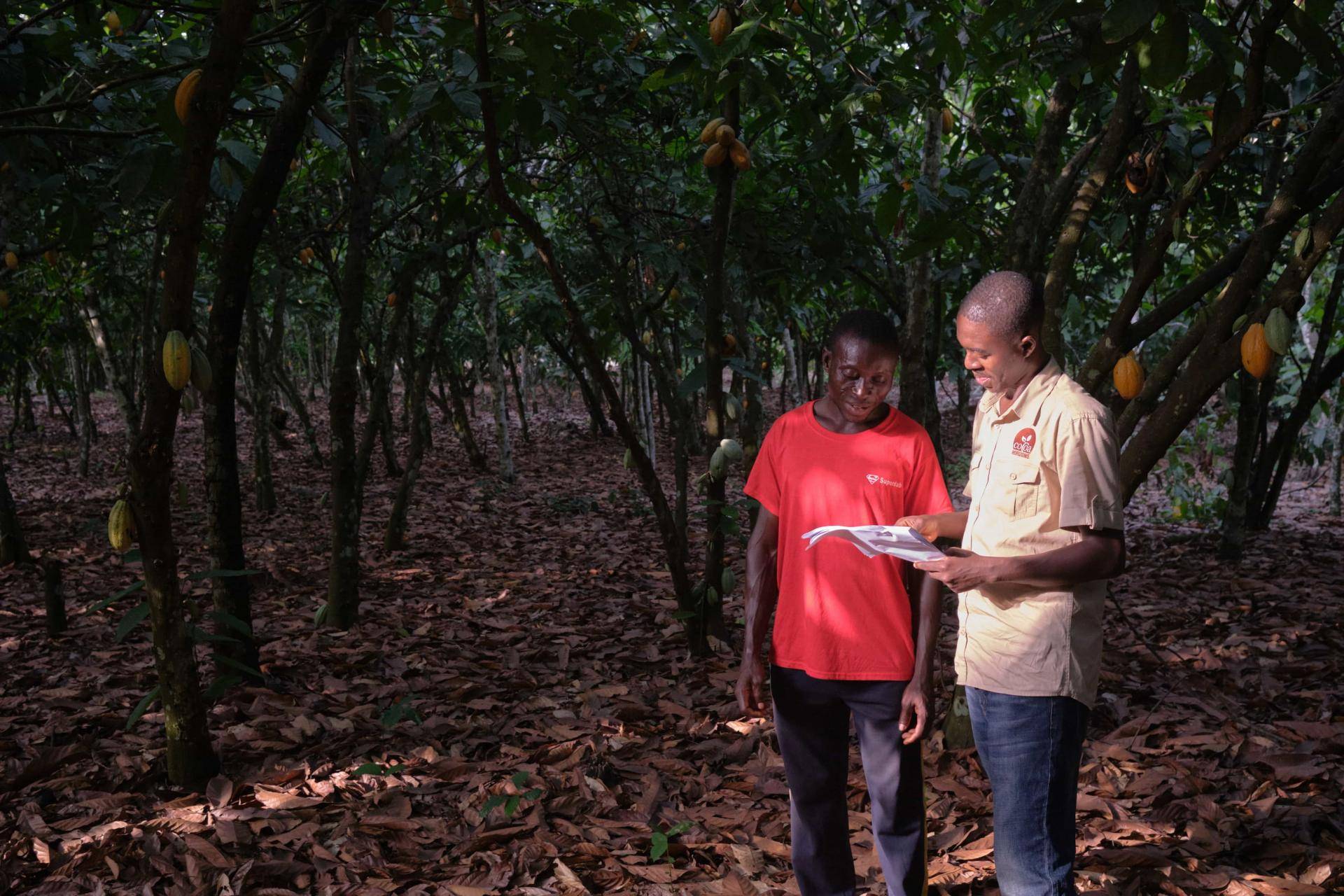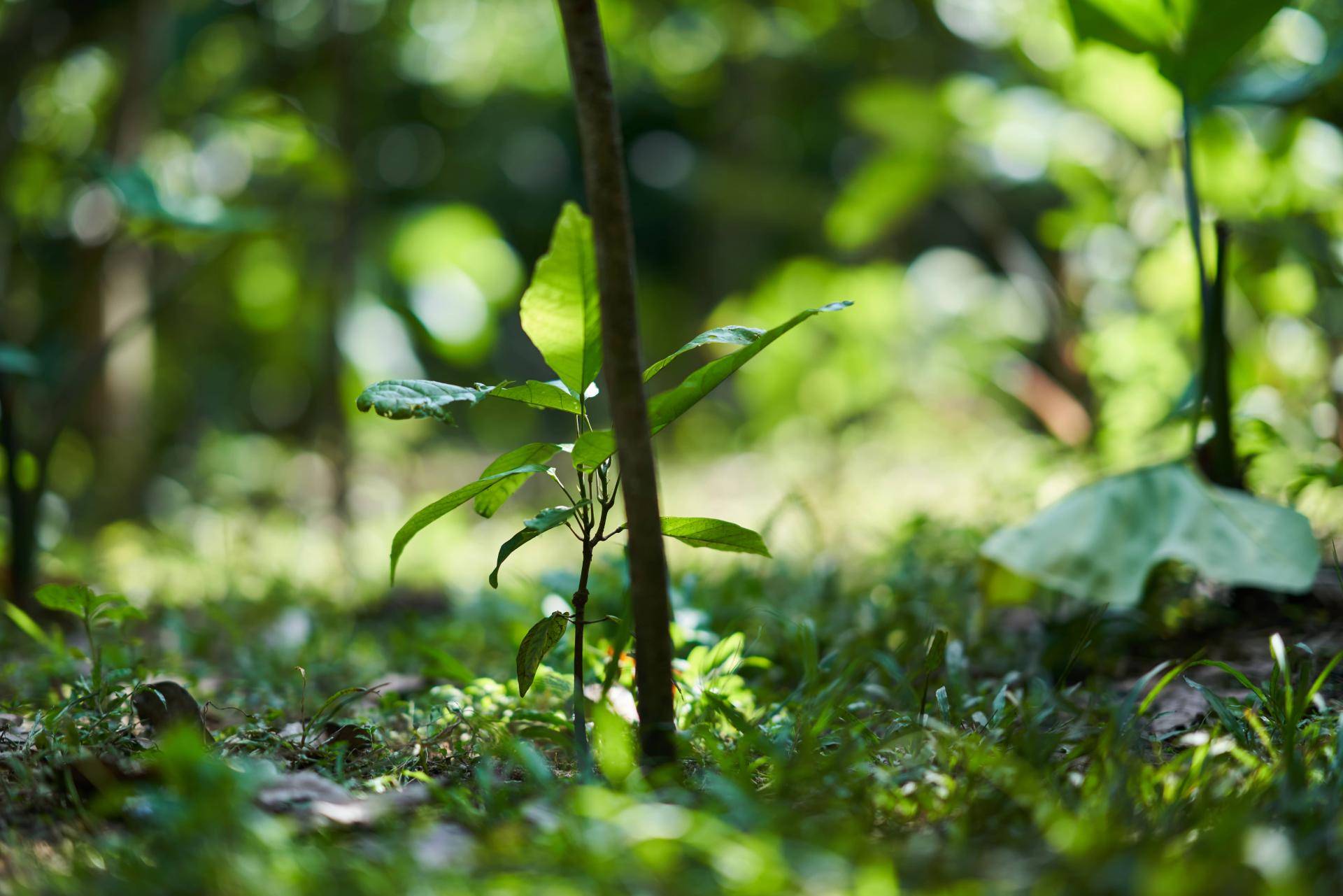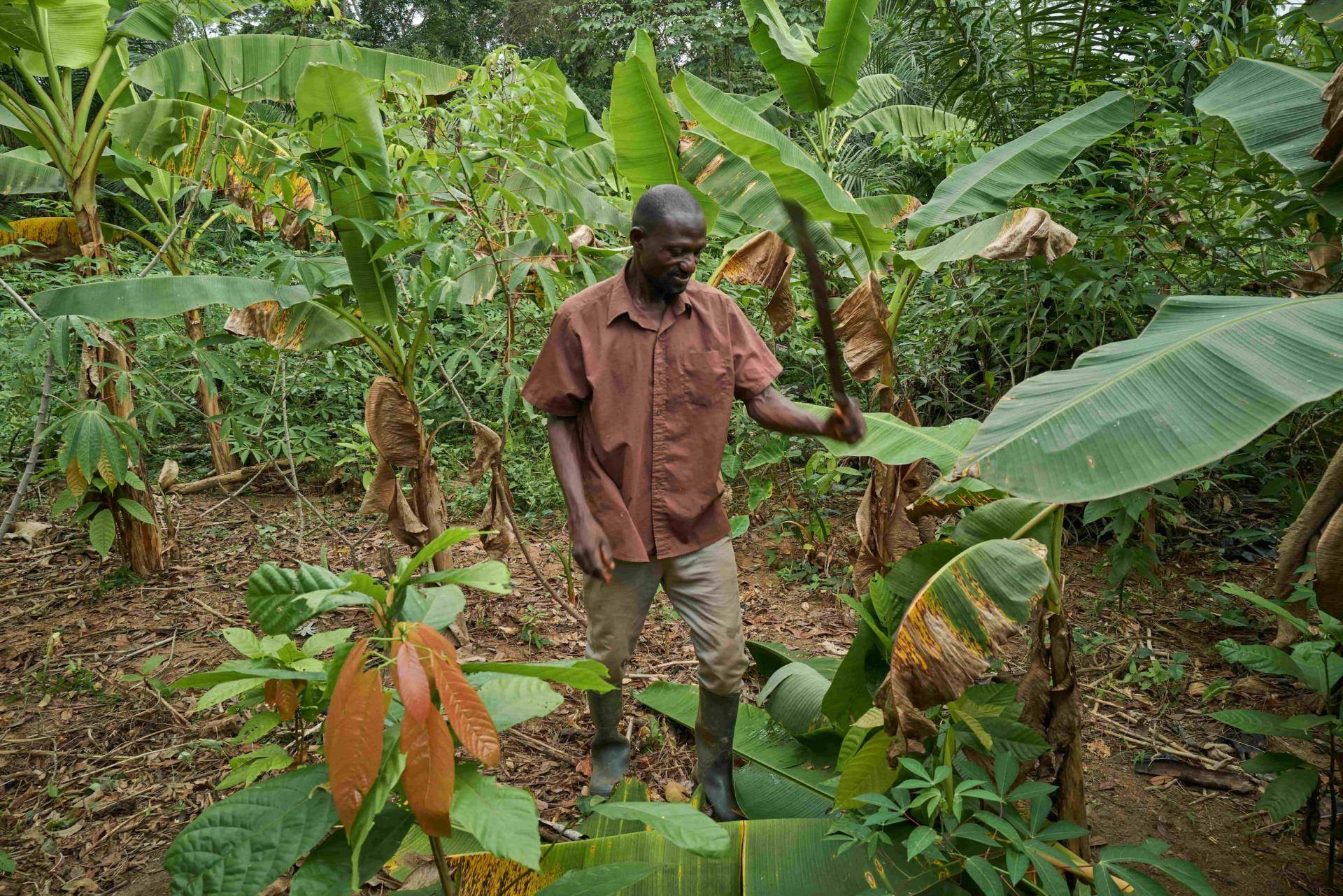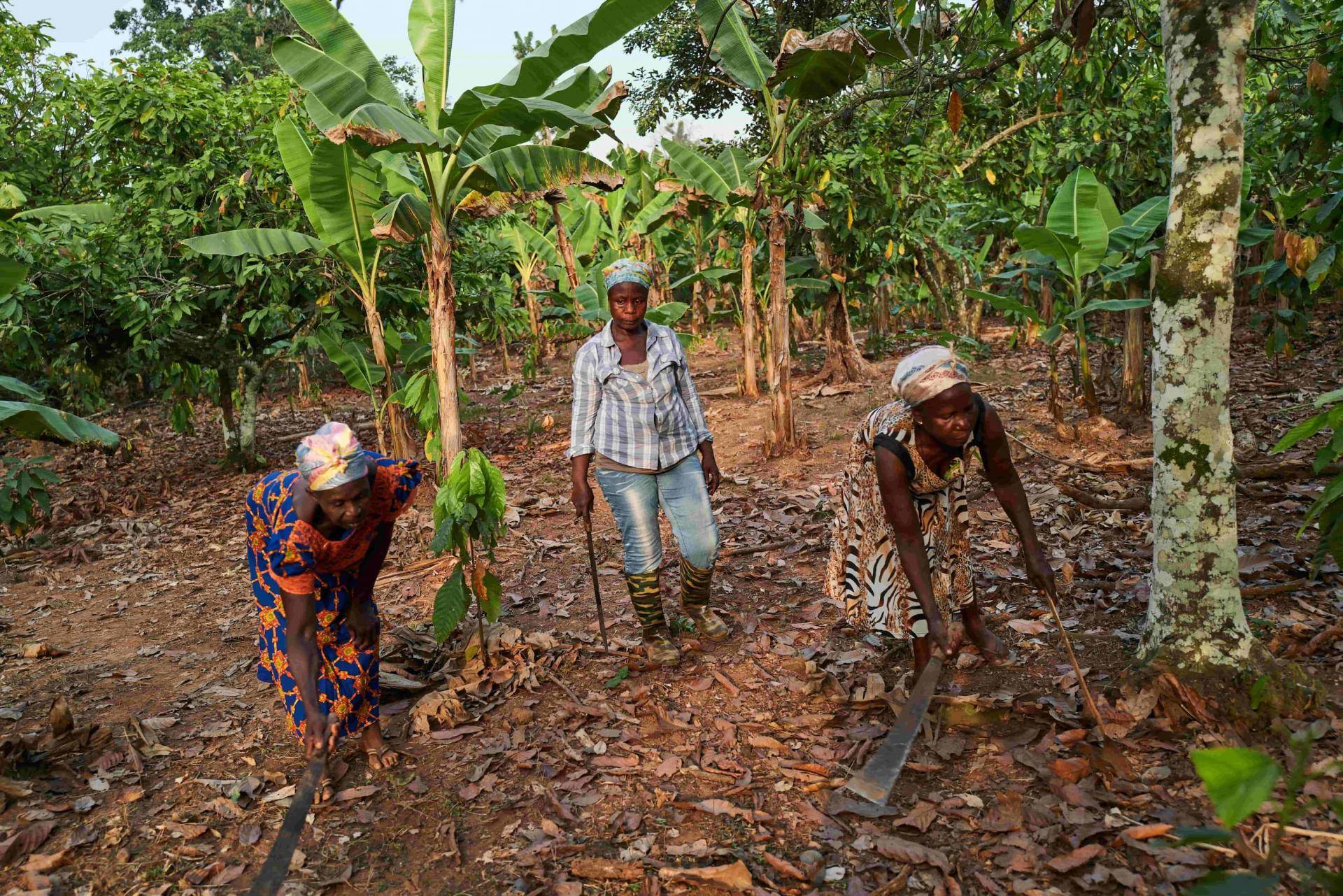Why the future of chocolate depends on healthy forests

Why the future of chocolate depends on healthy forests
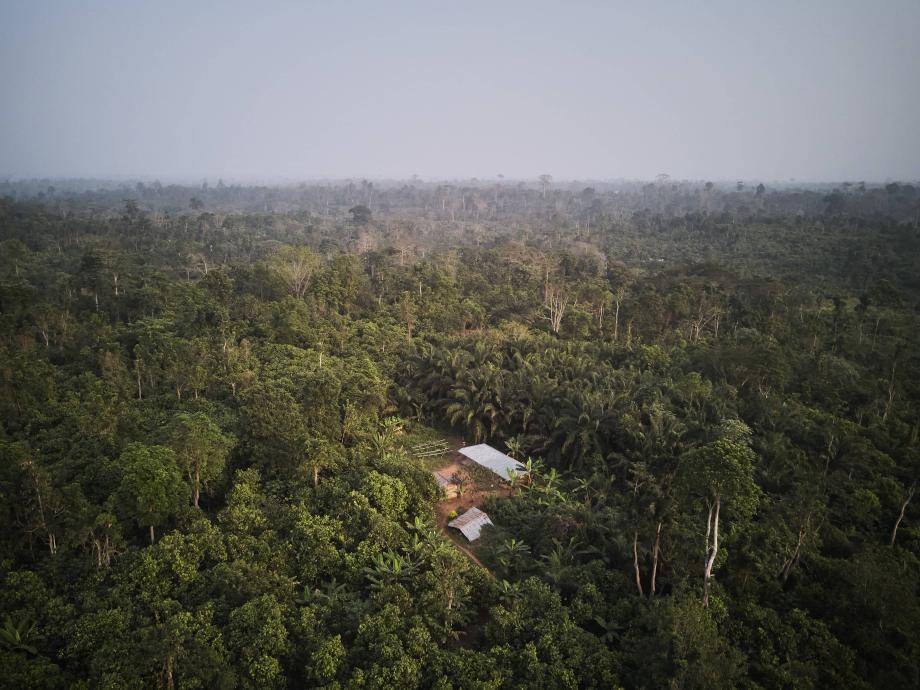
In order to become forest positive, we continue with our efforts to eliminate deforestation from our supply chain.
Côte d'Ivoire and Ghana respectively lost 25% and 8% of primary forest between 2002-20191. With a significant portion of deforestation attributable to cocoa farming expansion, collective action to end cocoa-related deforestation was needed. This is why, at the 2017 UN Climate Change Conference (COP 23), the governments of Côte d’Ivoire and Ghana together with leading chocolate and cocoa companies signed the Cocoa & Forests Initiative Frameworks for Action, defining the core commitments and time-bound targets required for a deforestation-free and forest-positive cocoa supply chain.
In 2020, CFI reported on the first two years of implementation (2018 - 2019). At Barry Callebaut, we made substantial progress towards our CFI commitments, which is also supported by our Forever Chocolate plan to make sustainable chocolate the norm by 2025. This included activities to improve farmer livelihoods, reforestation and agroforestry activities, and, importantly, the mapping of cocoa farms. This involved our teams on the ground walking farm perimeters of almost 160,000km!
As we review our progress this year, what did we achieve despite the challenges of COVID-19, and how have our activities impacted farmers and farming communities on the ground?
1 Global Forest Watch: https://www.globalforestwatch.org/dashboards/global/
Scaling up: an overview of our key achievements in 2020
Continuing to make an impact despite the challenges of COVID-19: our key achievements in 2020 include the public disclosure of our direct cocoa suppliers in Côte d’Ivoire and Ghana, training farmers in Good Agricultural Practices (GAP) and, on and off-farm restoration, via the distribution of seedlings and native trees.
Mapping for forest protection
We recognize that mapping the location of the farms we are sourcing from in our direct supply chain is the first step to ending deforestation. Mapping the size and geography of a farm indicates if it is located in, or near, a protected forest area. We have undertaken this work as a matter of priority. To date, we have now mapped 158,830 farms in Côte d’Ivoire and Ghana in our direct supply chain. This means that we have established traceability for the cocoa volumes coming from these mapped farms.
As an additional result of our intensive mapping efforts, in September 2020, we publicly disclosed our direct cocoa suppliers in Côte d’Ivoire and Ghana. We have continued to update this map as part of our work towards a more transparent and traceable cocoa supply chain.
Growing more cocoa on less land
Farmer poverty fuels deforestation. To stop further encroachment into protected forest areas, cocoa farmers need to be equipped to increase the amount of cocoa they grow on the same, or even less, land. To increase the long-term productivity of cocoa in environmentally suitable areas, we have focused coaching efforts on Good Agricultural Practices (GAP), which include the topics of replanting, pruning, and soil nutrition. Last year, we trained 125,965 farmers, providing agricultural inputs such as fertilizers, planting materials, and crop diversification packages.
As well as farm mapping, we distributed over 1.2 million cocoa seedlings in Ghana. In addition to our efforts in previous years of over 1.8 million, these figures show that we are on track to reach our 2022 CFI commitment of 3.2 million seedlings. Last year, we also distributed just over 1.6 million shade trees in Côte d’Ivoire and Ghana.
Supported by our customers, we have trained close to 400,000 farmers in Good Agricultural Practices (GAP) since the establishment of CFI. This total achievement well exceeds our 2022 CFI commitment of training more than 193’000 farmers in GAP activities.
Using Innovation to scale
Last year we commenced a large-scale ecosystem restoration project in Côte d’Ivoire. As part of this project, we will pilot innovative seedling generation, planting, and monitoring in harsh conditions. In the next fiscal year, we will continue with the pilot to determine how we can scale the initiative by investigating new drone and artificial intelligence technology for monitoring and seeding purposes.
COVID-19 presented many challenges in terms of logistics, transportation, and delivery of farmer training. However, thanks to the early adoption of precautionary measures and the dedication and teamwork of our employees and partners, our progress shows that we managed to continue with our efforts to support cocoa farmers, eliminate deforestation from our supply chain, and promote forest restoration and protection in the cocoa supply chain.
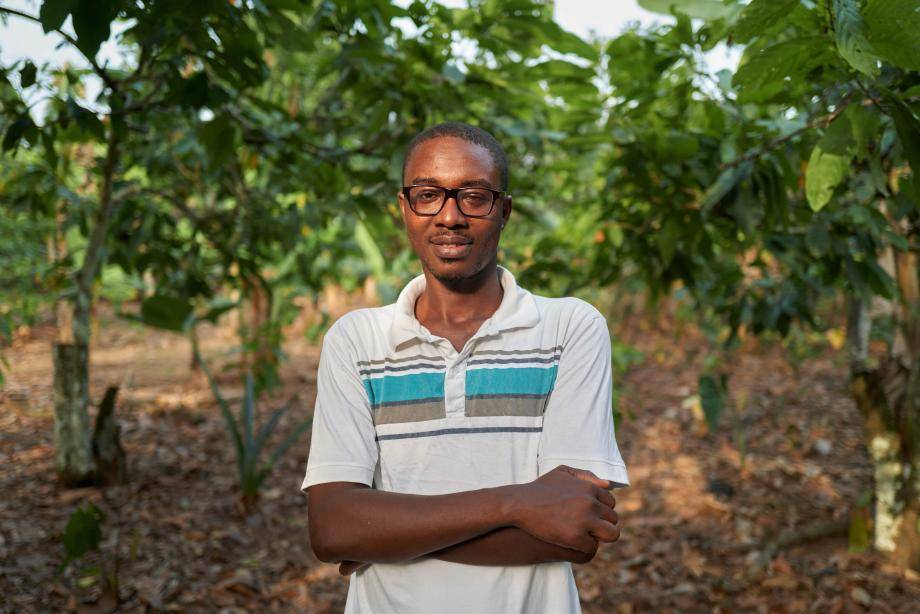
Hamidu Issaka, 35, has always had a passion for supporting farmer livelihoods. “I first volunteered with an agribusiness growth initiative to support cocoa farmer livelihoods when I was in college.”
Implementing CFI is about creating knowledge, establishing trust, and showing tangible results
Based in Kumasi, Ghana, Hamidu Issaka, 35, Community Development Manager, Barry Callebaut, helps cocoa farmers to acquire key skills and knowledge to improve their lives and communities by employing responsible labor practices, professionalize their farms, increase productivity and increase resilience against climate change.
Hamidu believes the mapping of farms is one of CFI’s most important activities. Farm mapping allows Barry Callebaut to continue its steady progression towards a more transparent supply chain. In addition, mapping also brings many benefits to the farmer.
“We often find that a farmer has no idea about the size of his farm, which may not seem like such a huge problem. But, for example, if a farmer thinks his plot is four hectares, when it is in fact only two hectares, consider the substantial cost savings he could make by buying fertilizer for only two hectares. In addition, it also prevents the farmer from applying too much fertilizer, which has a detrimental impact on yield. Mapping gives farmers a better understanding of their own operations.”
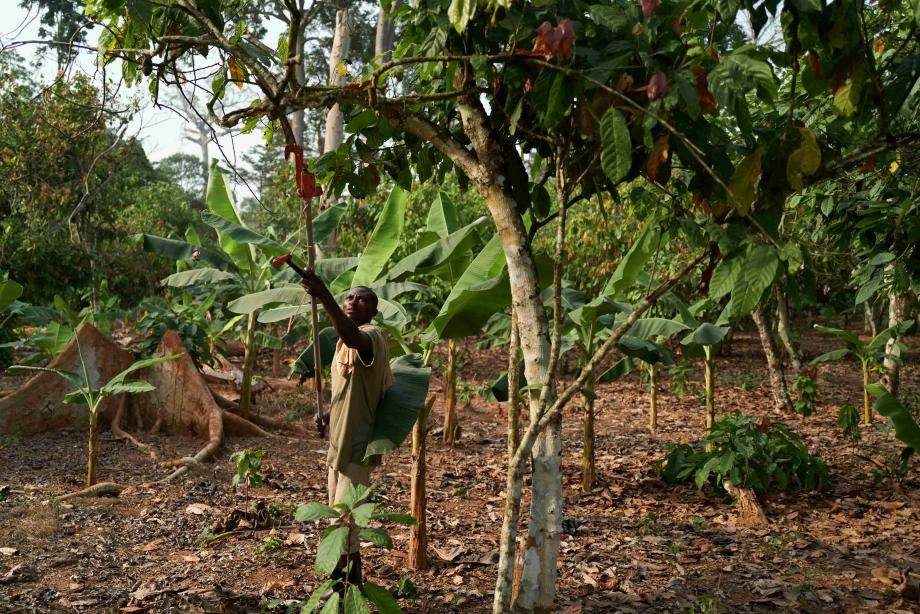
Good Agricultural Practices (GAP): include the topics of replanting, pruning, and soil nutrition.
Mapping extends beyond measuring the size and geographical location of a cocoa farm. Household data is also collected, which allows for the development of tailored, individualized farm plans. Providing farmers with the appropriate training and services, based on their individual situation and farm profile, supports their journey out of poverty.
“When farmers see the end results of applying Good Agricultural Practices, it enables them to look beyond this season’s crop, and to a more sustainable farming future. They see that increasing cocoa yield with the same amount of land is possible.”
Hamidu believes establishing trust is a critical factor for successful engagement with farmers and farming communities.
“Achieving trust with farmers and communities involves frequent visits, being visible in the community, offering regular farmer training, and being available to provide guidance and support when needed. Showing farmers real, tangible results also achieves buy-in. An example here is the work we do with underplanting, whereby we prune back the older cocoa trees, clear weeds, and plant young seedlings underneath. Farmers see that the older trees suddenly start producing more - and they ask me why this is happening. I explain that by pruning, clearing waste and underplanting, the older trees can become healthier whilst the young ones are growing. Planting shade trees has the same effect. Shade-grown cocoa improves soil quality and can increase biodiversity on the cocoa farm.”
“We’re working hard to show farmers that rehabilitating their existing farmland and diversifying their income with other crops, for example, will not hurt their current income and, in fact, is very likely to increase it.”
Becoming forest positive: actions for 2021 and beyond
Barry Callebaut is committed to ending deforestation in the cocoa and chocolate industry. Working in close partnership and collaboration with industry, governments, and civil society, we can continue to deliver on the objectives we set ourselves. For more information on our CFI Progress, please view our CFI Progress Report 2020.
Going forward, we will continue to explore what’s needed to scale innovative solutions as well as investigate the latest opportunities in technology. In addition, we will advance our efforts to promote large-scale reforestation, in order to become forest positive, mitigate the impacts of climate change and restore the ecosphere of forests.

